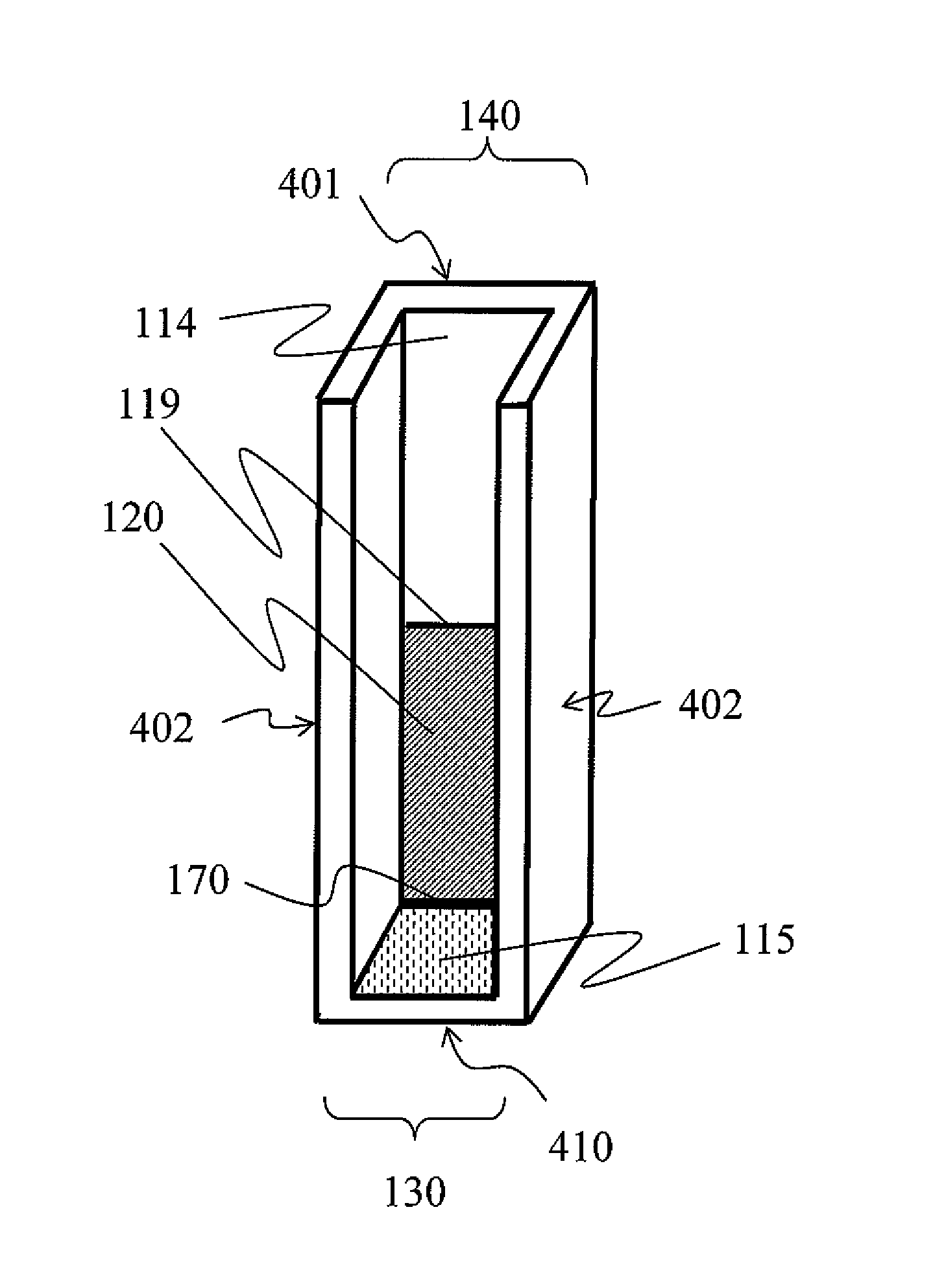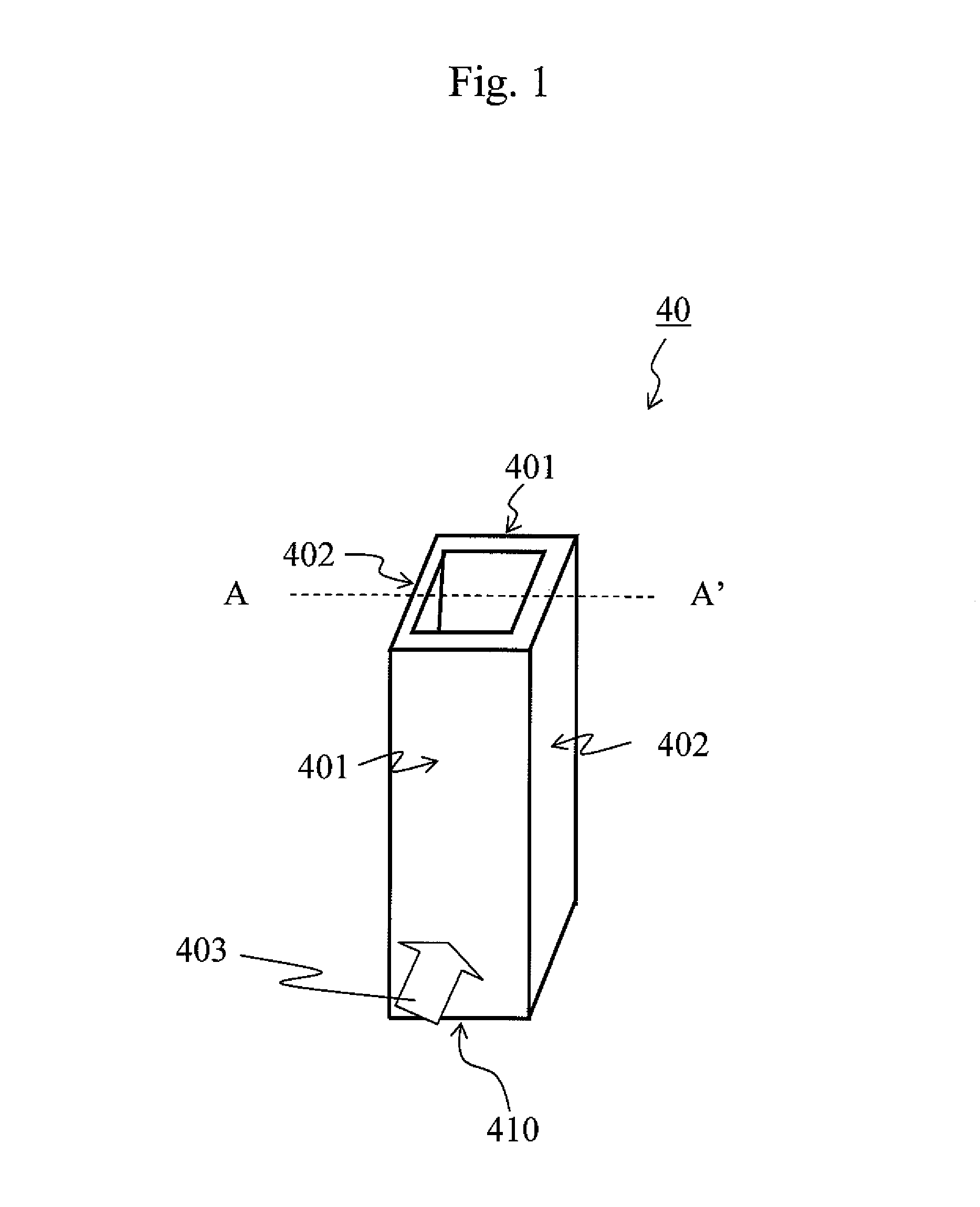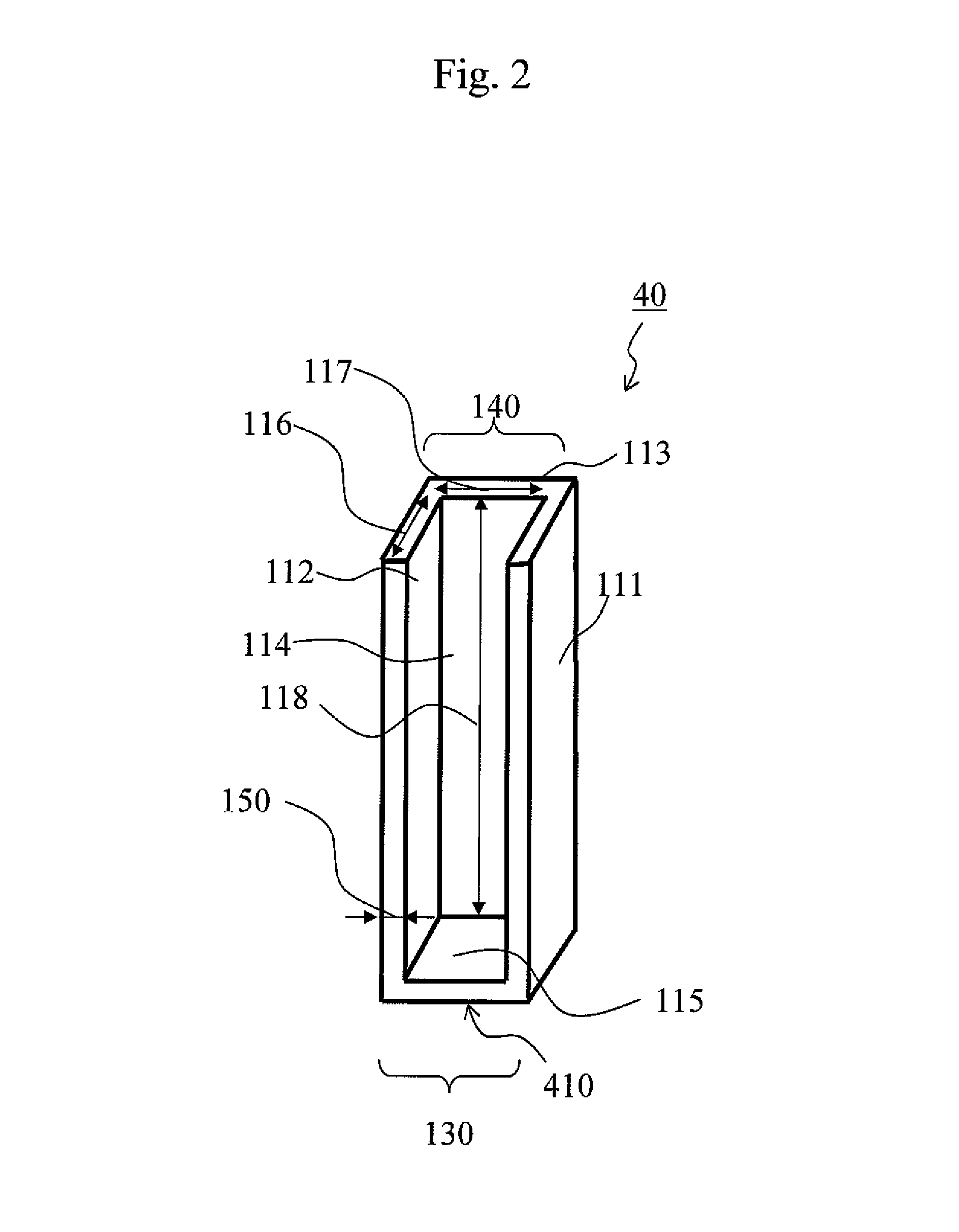Cell made of polymers for spectra measurement and method for producing the same
a technology of spectra and cell, applied in the direction of analytical glassware, instruments, chemical indicators, etc., can solve the problem of not significantly varying absorbance at a practical level, and achieve stable surface modification and hydrophilization, no adverse effects on optical properties, and high tolerance
- Summary
- Abstract
- Description
- Claims
- Application Information
AI Technical Summary
Benefits of technology
Problems solved by technology
Method used
Image
Examples
example 1
Partial Surface Modification of Resin Cell (1)
[0080]A cell used for an automatic analysis apparatus (hereafter referred to as a “cell”) was prepared from cycloolefinpolymer via injection molding. A material of a cell may be a resin selected from among cycloolefinpolymer resin, polycarbonate resin, acrylic resin, and polystyrene resin. From the viewpoint of low water absorption, low water vapor permeability, high total light transmission, a low refractive index, and a low mold shrinkage factor, cycloolefinpolymer resin is preferably selected. Cycloolefinpolymer is a polymer, the main chain and the side chain of its molecule are composed of carbon-carbon bonds and carbon-hydrogen bonds, and a cyclic saturated hydrocarbon is present in part of the main chain. The automatic analysis apparatus allows an analyte sample to react with a reagent in each unit cell to assay color development of a pigment and latex aggregation based on changes in light transmission at a plurality of given wavel...
example 2
Partial Surface Modification of Resin Cell (2): Use of Hollow Pipe Electrode
[0173]Example 2 also demonstrates an example of surface modification of a reaction cell as in the case of Example 1. Example 1 describes a case in which a chamber was used to elevate the nitrogen concentration than that of the air to perform corona discharge treatment. Example 2 describes a case in which a chamber that was necessary in Example 1 was not necessary and an example of surface modification with the use of a hollow electrode with reference to FIG. 16. The other treatment conditions are also in accordance with those employed in Example 1.
[0174]The chamber 210, a plurality of inlets, and a gas inlet shown in FIG. 4 are not necessary herein. A hollow electrode was used unlike the case of Example 1. FIG. 16 is a schematic diagram from the viewpoint 219 shown in FIG. 4. The structure of the opposing electrode is the same as the structure shown in FIG. 6. A hollow electrode 80 was used as a rod-like ele...
example 3
Partial Surface Modification of Resin Cell (3): Use of Mask
[0177]Corona discharge treatment was carried out using a chamber in the same manner as in Example 1 to make the cell inner surface partially hydrophilic. A cylindrical rod-like electrode 90 was used. FIG. 17 shows an example of a schematic diagram seen from the viewpoint 219 of FIG. 4. A portion of an electrode diameter used in this example inserted into the cell 93 is straight. A portion inserted into the cell may comprise a large electrode diameter and a small electrode diameter. The opposing electrode 94 used for the photo measurement wall and the electrode 95 used for the bottom surface were provided, and an adequate electrode positioning, an adequate position of insertion, and an adequate electrode-electrode distance were determined in the same manner as in the case shown in FIG. 6. A region on a cell inner surface that is not to be treated was covered by a mask 91 made of a resin prepared from the same material of the ...
PUM
| Property | Measurement | Unit |
|---|---|---|
| half length | aaaaa | aaaaa |
| length | aaaaa | aaaaa |
| height | aaaaa | aaaaa |
Abstract
Description
Claims
Application Information
 Login to View More
Login to View More - R&D
- Intellectual Property
- Life Sciences
- Materials
- Tech Scout
- Unparalleled Data Quality
- Higher Quality Content
- 60% Fewer Hallucinations
Browse by: Latest US Patents, China's latest patents, Technical Efficacy Thesaurus, Application Domain, Technology Topic, Popular Technical Reports.
© 2025 PatSnap. All rights reserved.Legal|Privacy policy|Modern Slavery Act Transparency Statement|Sitemap|About US| Contact US: help@patsnap.com



